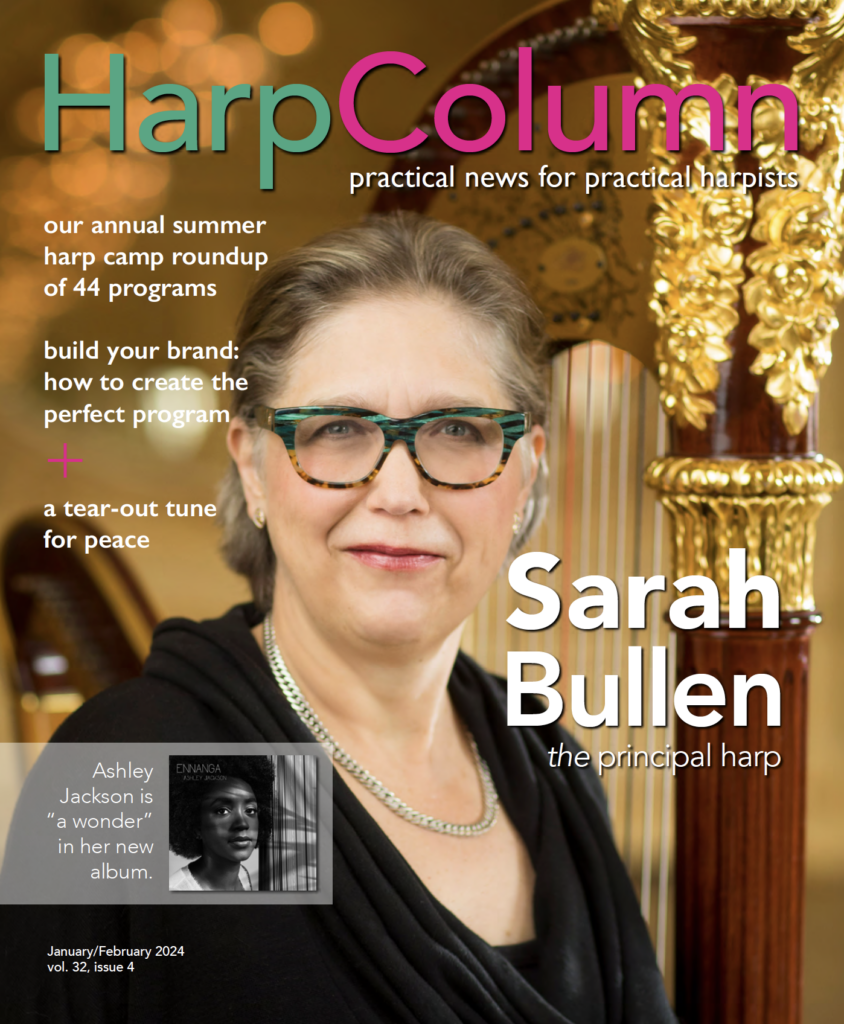If you have ever performed in a competition, you know how demanding the process is. There are countless techniques to be mastered and notes to be polished. While important fundamental skills like clean crossunders and bell-like harmonics get a lot of well-deserved attention, and phrasing and sound production receive their due in the practice room, there is one aspect of a competition performance that deserves more time in the spotlight: the art of interpretation.
…our role as a performer is to articulate the score while adding our own unique musicality to it.
Last summer I was invited to help judge the 25th American Harp Society National Competition at the Colburn School of Music in Los Angeles. There was much to applaud across all the divisions, with memory skills at the top of the list. Also impressive were the level of confidence and technical agility on display. With a wide range of interpretations and fluid pedal technique, the performers showed that the future of the harp is in good hands.
The judging experience inspired me to think about the art of interpretation and how I can best guide my own students during their competition preparations. We live in a culture where flashy and highly dramatic actions tend to attract attention, especially online, and while these qualities are not wrong or inappropriate, I wondered how these popular tendencies might influence performers’ interpretations.
Judging a music competition is, like performing, an art. As a judge I am always looking for an informed interpretation, one that respects the score while expressing musical connections and the performer’s own musicality. What I find less convincing (and less musical) is a superficial interpretation that does not respect the score and does not help me understand the piece. Examples of a less satisfying interpretation might be a performer who uses extreme dynamic changes (which are not marked in the score), or extreme rubato, sometimes in works where that type of rhythmic manipulation is stylistically incorrect (such as in pre-Romantic works). These approaches toward interpretation might sound flashy and highly dramatic, but they are not rooted in the score and are thus less musically intelligible and satisfying. And, frankly, they are disrespectful to the score, the composer, and the audience.
It is easy to be swayed by a superficial interpretation, especially if the listener does not know much about the piece and if the performer’s technique and presentation are impressive. But I caution all of us to remember that our role as a performer is to articulate the score while adding our own unique musicality to it. This synthesis of creativity between the composer/score and performer can be one of the great joys of performing, and it can create an informed interpretation with the potential to move your audience more deeply. Because there are different ways to interpret a score, and everyone’s musicality is unique to them, there are innumerable interpretative possibilities for every piece. Yo-Yo Ma, the great American cellist, has recorded J.S. Bach’s Cello Suites three times, which suggests that he too enjoys exploring different ways to engage with these pieces using his fluent musicality.
In my own practicing and teaching, I have always gravitated towards a holistic approach when learning a new work. Practicing the notes accurately from the start (no matter how slowly I need to go at first to not make mistakes) and understanding all of the extra-musical indications (such as tempi, dynamics, and expression marks) are essential, of course. But being curious about the piece, the composer, the historical context of the work, how it is put together, and the fascinating ways that each piece is unique are equally important and can help create a more informed interpretation.
One last thought: In my experience, one of the most overlooked parts of interpretation is rhythmic phrasing. Articulating the “groove” of the meter (triple meters feel different than duple meters, for example) while shaping the rhythmic subtleties within the larger beats (using tasteful and stylistically appropriate rubato) brings the music to life. An informed approach towards rhythm will elevate your interpretation immensely. Exploring this under-studied concept can unlock untapped musical possibilities in your playing and teaching.
Each harpist with the dedication and passion to prepare for a competition enriches our community. Bravi tutti and happy
practicing! •






